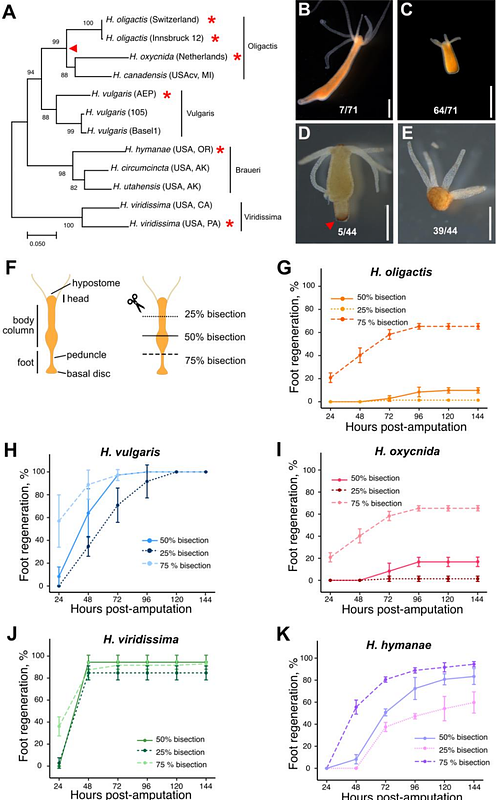Wnt signaling restores evolutionary loss of regenerative potential in Hydra

Wnt signaling restores evolutionary loss of regenerative potential in Hydra
Campos, S. E.; Naziri, S.; Crane, J.; Tsverov, J.; Cox, B. D.; Ciampa, C.; Juliano, C. E.
AbstractThe regenerative potential of animals varies widely, even among closely-related species. In a comparative study of regeneration across the Hydra genus, we found that while most species exhibit robust whole-body regeneration, Hydra oligactis and other members of the Oligactis clade consistently fail to regenerate their feet. To investigate the mechanisms underlying this deficiency, we analyzed transcriptional responses during head and foot regeneration in H. oligactis. Our analysis revealed that the general injury response in H. oligactis lacks activation of Wnt signaling, a pathway essential for Hydra vulgaris foot regeneration. Notably, transient treatment with a Wnt agonist in H. oligactis triggered a foot-specific transcriptional program, successfully rescuing foot regeneration. Our transcriptional profiling also revealed dlx2 as a likely high-level regulator of foot regeneration, dependent on Wnt signaling activation. Our study establishes a comparative framework for understanding the molecular basis of regeneration and its evolutionary loss in closely-related species.